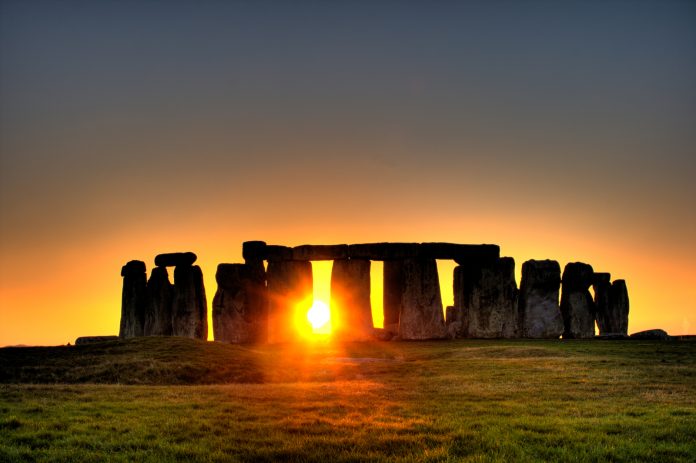Stonehenge is an ancient monument located on the earth’s surface in the British Isles. The monument has attracted visitors from all over the world since prehistoric times and has been a site of pilgrimage for many centuries. Solstice at Stonehenge is a term that refers to an astronomical event where the sun’s rays reach exactly at the most southerly point in its entire cycle, which happens twice a year during summer and winter solstices.
However, it is difficult to be precise about this event since it can happen on any day of the summer or winter solstice. Stonehenge is a prehistoric monument located in Wiltshire, England. On the summer solstice, it is aligned so that the sun rises precisely along its long axis. Stonehenge has been used for various purposes by humans since its construction. Some of these purposes include celebrations, religious ceremonies, military practices, and astronomical observations
There is a visitor center that was built to house the Stonehenge Visitor Center. It has a 360-degree panorama and includes an exhibition area with artifacts and archaeology from the site. They wanted to create a building that would encourage visitors to take in the natural beauty of Stonehenge without sacrificing access or comfort. The designers attempted to balance what they hoped were conflicting demands: privacy and open space; activity and rest; reverence and enjoyment.
While visitors have free access through the building, there is no way in or out of it other than through one door at ground level; visitors are then required to pass through metal detector screening for safety reasons before continuing on their journey around the site. The solstice can be celebrated with family, friends, or even at work! If you are celebrating at work or with your co-workers, you might want to consider getting them involved in your celebration by having a party that includes a little bit of everything—food, games, whatever your group enjoys!
In the past, there have been several different interpretations of the solstice at Stonehenge. Recent research suggests that the solstice marked not only the summer solstice but also a time of year when ancient societies celebrated and held rituals.
During this era, people were more interested in astronomy than calendars. They built their own stone monuments to serve as astronomical calendars. These included Stonehenge, Avebury, and Silbury Hill, among others.
Winter Solstice at Stonehenge
Stonehenge is a famous Neolithic monument that is one of the most famous prehistoric sites in the world. The winter solstice event at Stonehenge is an annual astronomical event that has been happening for thousands of years and will continue to happen for many more. In 2021, the winter solstice at Stonehenge was visible in Europe between 9.45 degrees and 2.56 degrees north of the equator when it was visible in Europe.
The winter solstice at Stonehenge is the day when the sun rises on its northernmost declination on or around December 20th of each year, giving a maximum day length of nearly 14 hours, with dawn occurring at 5:11 a.m. and dusk at 8:11 p.m. Although the winter solstice is a particularly special time of the year, it’s not actually that significant at all. It’s just another day. But it is still important to note that this particular day is also considered a celebration.
The winter solstice marks the shortest day and longest night of the year. The winter solstice itself has been celebrated, with many cultures celebrating it with lavish and extravagant ceremonies to mark this day of rest and renewal. What was life like back then, when people were still making their annual forecasts by reading the stars, a practice that most people in today’s society have given up on because of technological advancements?
There are many significant things that happen during this time of year, but nobody really knows what happens at Stonehenge during this period. The way Stonehenge was built suggests that it may have been used as a symbol of different religious ideas at different times and may have even been used for astronomical purposes in order to make sure that certain rituals were performed during the correct time of year.
Summer Solstice at Stonehenge
The summer solstice at Stonehenge is one of the most popular events of the year. The sun will rise to its highest point in the sky and make a perfect circle with the moon. Thousands of people gather at Stonehenge to celebrate on this night, which is known as “the longest day” in many civilizations.
The summer solstice is the most important holiday on the calendar of ancient civilizations. It is also a time when people tend to be more open and friendly with one another. Here are some interesting summer solstice facts that you might not know about!
Every June 21, at 3:22 p.m., the sunset near Stonehenge aligns perfectly with the standing stones of the monument.
According to an article by Smithsonian magazine in 2009, it takes an average of 2.7 seconds for someone to walk from Stonehenge to the nearby town of Amesbury (which is about 5 miles away).
The earliest known observance of the summer solstice was in 2004, when archaeologists found a cooling pond dating back 10,000 years near Stonehenge
The summer solstice is celebrated in many countries around Europe and England. Stonehenge is often used as a reference point for astronomy. On the summer solstice, the sun rises at one of the stone circles on Stonehenge, but not all of them.
When it sets at dusk on a solstice evening, it enters a hole in Stonehenge’s rock wall that is pointed directly at Aiserford Hill, about two miles away from the monument in Wiltshire, England.
Read More: The Colorful Reed Flute Cave China












